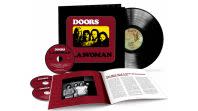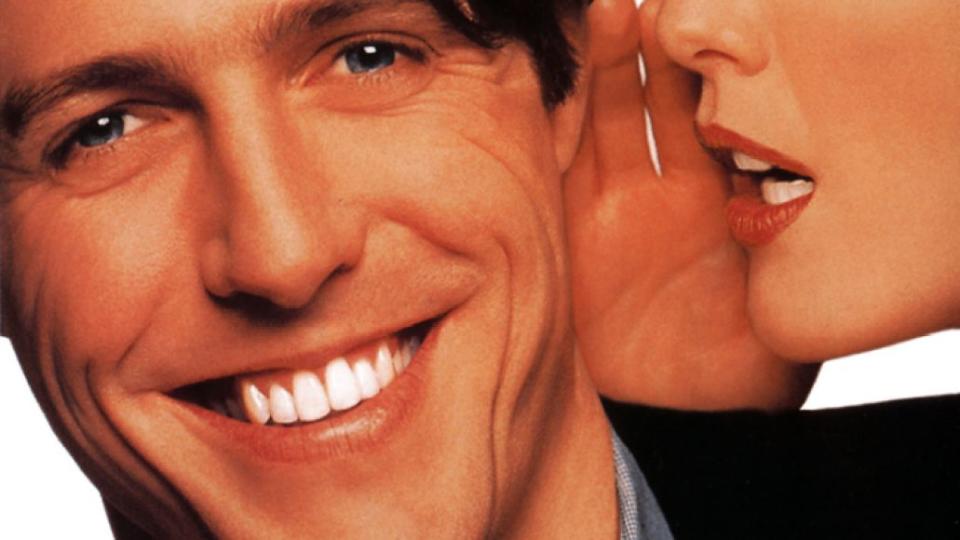Every Album by The Doors, Ranked From Worst to Best
- Oops!Something went wrong.Please try again later.
The post Every Album by The Doors, Ranked From Worst to Best appeared first on Consequence.
This article originally ran in 2012 and has been updated.
Welcome to Dissected, where we disassemble a band’s catalog, a director’s filmography, or some other critical pop-culture collection in the abstract. It’s exact science by way of a few beers. This time, we sort through the best and worst of Jim Morrison’s wild rock ‘n’ roll revue.
In his 2006 review of The Doors: Perception box set, Pitchfork‘s Stuart Berman wrote, “The Doors aren’t so much a band as a phase you go through, rarely to be visited again, like so much of the high-school-notebook poetry that Jim Morrison’s lyrics inspired.” While plenty of critics agree with him (including writers on our staff), most will contend that’s quite an overstated opinion. Or, maybe not.
Truth be told, The Doors have always been a polarizing band, and their success to destruction ratio was about 1:3. They burned bridges at Los Angeles’ Whisky a Go Go, thanks to their 12-minute Oedipal epic, “The End”; they were banned from The Ed Sullivan Show; they pissed off The Kinks with “Hello, I Love You”; they lost critics with 1969’s The Soft Parade; they ran into a gamut of legal problems, including Morrison’s notorious Miami arrest in 1969; and, to top it off, they were sensationalized in 1991 by Oliver Stone.
That last part isn’t their fault — and the band’s surviving members have all since written the film off — but it’s still influenced the enduring legacy of the Los Angeles quartet. Morrison, the late poet and frontman, is forever immortalized as a reckless, abusive alcoholic who stumbled around the West in leather pants while muttering inconsistencies about love, death, and Indians.
Who knows how much of it is true; after all, there are countless anecdotes in Danny Sugerman and Jerry Hopkins’ essential Morrison biography, No One Here Gets Out Alive, that support half of the stories portrayed in Stone’s film. If anything, they only expand on them.
The Doors’ L.A. Woman Gets 50th Anniversary Deluxe Edition with Lost “Riders on the Storm” Demo
Still, Berman’s assessment bruises. If the music’s truly sophomoric and Morrison’s remembered as “a drunken buffoon,” as the late Philip Seymour Hoffman proclaimed as Lester Bangs in Cameron Crowe’s Almost Famous, then what’s left to mine here? Well, how about their influence? Iggy Pop loved them, so did Ian Curtis, and you could maybe add Jarvis Cocker to that list.
Love him or hate him, there’s no denying Morrison’s impact, which Berman addresses in that very same review, and there’s no denying that reckless power they trademarked. However, isn’t recklessness the sort of thing a high school student strives for? Perhaps there is truth to Berman’s claim.
Nevertheless, we decided to revisit the group’s six studio albums (ignoring the Morrison-less posthumous releases), specifically 1971’s Other Voices, 1972’s Full Circle, and 1978’s incredibly polarizing An American Prayer. (To be fair, we’ll occasionally blast the latter’s “Ghost Song,” but it would behoove you to buy Morrison’s book of poetry, instead.)
So, grab a handle of whisky and enjoy an impractical dissection of the band’s prized discography. Because if there’s anything we learned from Kids in the Hall, it’s that “…if you want to be a Doors fan, you can’t just buy any album. It’s scientific.”
06. The Soft Parade (1969)
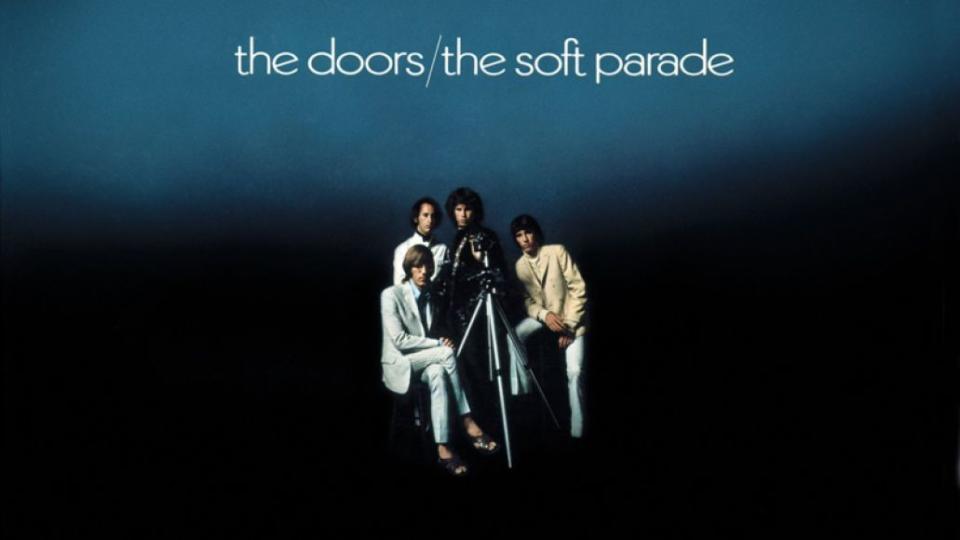
“Horse Latitudes”: 36.17°N 115.13°W — or, Las Vegas, NV — Forget gambling, skip the strip clubs, and don’t buy tickets to any shows. You are the show. Take your ass to the Bellagio and start singing each song here — and loud. Though, be careful who you ask for “soft asylum.” Could get rough.
Number of songs pre-written for The Bee Gees: 1, “The Soft Parade.” John Densmore’s scatterbrained percussion has Barry, Robin, and Maurice Gibb written all over it.
The best cover of “Five to One”: “Wild Child.” Okay, so it’s not the same song, but the stomping Godzilla-like rhythm section and the song’s vocal melody echo the greatest track off of Strange Days. Morrison’s snarl on “wild chi-ld” even mimics how he screams “five to one.” Maybe they forgot.
Scrapped theme song for Dallas: “Tell All the People.” It’s all in the lyrics: “Can’t you see me growing, get your guns”; “Gonna bury all our troubles in the sand”: “Follow me across the sea/ Where milky babies seem to be.” Morrison hated the song, but J.R. would have loved it. Well, maybe not.
“Where’s your will to be weird?” When the 1885 version of ZZ Top — see: Back to the Future Part III — seemingly chimes in throughout “Runnin’ Blue.” Though, we doubt guitarist Robby Krieger would have been able to flip his guitar around like Dusty Hill and Billy Gibbons. Just sayin’.
Wanna know how long this album took to make?
Shortest song: “Runnin’ Blue” (2:26)
Longest song: “The Soft Parade” (8:35)
Val Kilmer did it better: Nothing beats a drunken Kilmer flubbing the recording sessions and ad-libbing the lyrics to “Touch Me,” specifically the iconic chorus. It’s impossible to listen to the song now and not belt out: “C’mon, c’mon, c’mon, c’mon, c’mon now suck me, babe. Can’t you see, I need some fuckin’ head…” Thanks, Val.
Analysis: It’s unfortunate (and mildly unfair) to call The Soft Parade the band’s worst album, especially since it’s one of their more singular efforts and finds them tinkering with brass and strings in a manner that would become rather prevalent during the ’70s. The problem is that the album’s meandering, soggy middle — ahem, “Shaman’s Blues,” “Do It,” “Easy Ride,” and “Five to One”-rip-off “Wild Child” — deflates so much of the energy set in motion by “Tell All the People” and “Touch Me.”
Even worse, they completely fumble their comeback (see: “Runnin’ Blue” and “Wishful Sinful”) with the dubious title track.
Having said that, “Touch Me” would slot somewhere in the top five best Doors songs, and proves that their brazen attempt at candied pop was not only earnest but completely warranted. That showy opening, that triumphant sax solo by Curtis Amy, and those lush magical strings… it’s gorgeous rock ‘n’ roll. It’s also irresistibly catchy, and anyone who sings it inevitably sounds like a drunk and stoned Bill Murray at late-night karaoke, which isn’t a bad thing by any means.
For that alone, it’s worth having The Soft Parade in your collection, and with enough brandy, it’ll start to sound like the craziest Pat Boone album.
Fun fact: This was, not surprisingly, the band’s most expensive album.
05. Morrison Hotel (1970)

“Horse Latitudes”: 30.27°N 97.74°W — or, Austin, TX — Sell your car, cash out your ATM, head to Sixth and Red River St., slowly make your way into every bar, and then pass out somewhere on campus by week’s end. Wake up and find your car as you re-listen to “Waiting for the Sun” for the 70th time. See how long it takes you to realize you’re sitting in a used car lot.
Number of times a sloppy drunk has karaoked to “Roadhouse Blues”: Infinite
Number of times CoS’ Editor-in-Chief has karaoked to “Roadhouse Blues”: See above.
Best Creedence Clearwater Revival song NOT sung by John Fogerty: “Land Ho!”
Most confusing track simply because of its title: “Waiting for the Sun.” WTF? Don’t they have an album called that?
Top Outtake: “Indian Summer.” Dating back to 1966, this intimate number was originally intended to appear on their self-titled debut, but was shelved for later use, which makes sense as it wouldn’t fit on that record at all. It almost doesn’t fit here, either, and kind of sticks out like a sore thumb, but it’s quite gorgeous. Morrison’s “high school poetry” and Krieger’s candlelight guitar take center stage, drifting dreamily over the more subdued rhythm section of Ray Manzarek and Densmore. People, if you’re gonna dig into the vaults, here’s an example of Doing It Right.
“Where’s your will to be weird?” The way Morrison can take a tight, politically charged single and still manage to throw in a random spoken word interlude — this time, his classic tale of “Indians scattered on dawn’s highway bleeding.” Sigh, that’s our Jimbo.
Two Bars, One Album: Morrison was so transparent about his love for booze that he named the two sides of the album after his two favorite bars in Los Angeles — the Hard Rock Café (Side A) and the Morrison Hotel (Side B) — and if you look at the front and back cover of the album, you’ll find the band hanging out in each of them. Sadly, those days are long gone and both bars have since closed their doors, though Side A is survived by this soulless mausoleum…
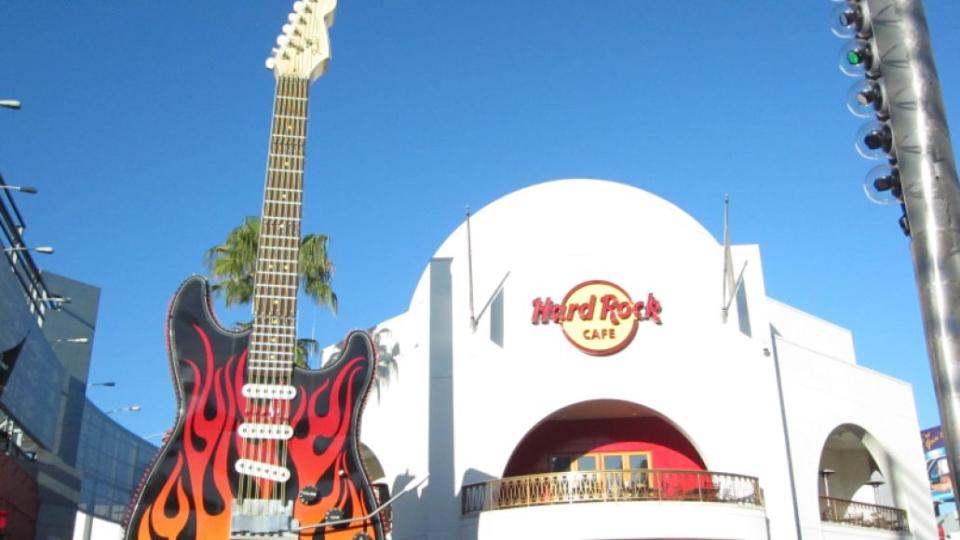
Shortest song: “Blue Sunday” (2:13)
Longest song: “Maggie M’Gill” (4:23)
Val Kilmer did it better: Nope, not this time; the Lizard King trumps the Iceman all over Morrison Hotel. Though, “Indian Summer” does soundtrack an enchanting scene between Kilmer and Meg Ryan, who plays Pamela Courson in the film. The effect is even better when they’re both speaking French, which is kind of ironic considering where they died…
Analysis: Morrison Hotel opted for a back-to-basics approach after the band spent the better part of a year trying to reinvent themselves with The Soft Parade. Not surprisingly, critics rejoiced at their decision, some even dubbing it their best and most daring piece of work at the time, alluding to the album’s often violent imagery (see: “Peace Frog,” “Ship of Fools”). On the whole, though, it’s a gritty, rusty, and raucous album, swelling with pessimism — Morrison sings, “The future’s uncertain, and the end is always near,” on album opener “Roadhouse Blues” — that undoubtedly came from the singer’s unshakeable alcoholism.
What gets confusing is when Morrison Hotel reaches back into the past. “Indian Summer,” “Blue Sunday,” and “Waiting for the Sun” are all exceptional tracks, but they don’t really belong on this album. It’s like someone came to the BBQ with tablets of acid, and the majority of the guests decided to ignore them and stick to the booze, instead. Looking back, these tracks feel like the final gasps of psychedelia for the group, who were quickly shifting into more bluesy rock ‘n’ roll, which was becoming of acts like Led Zeppelin, The Rolling Stones, and The Who. It was a good look on them and would be perfected on their follow-up.
04. Waiting for the Sun (1968)

“Horse Latitudes”: 36.15°N 112.30°W — or, Arizona’s Grand Canyon National Park — Keep replaying track one in the car (despite any traffic, weather conditions, or engine distractions), then let it rip as you hike down to the Colorado River, where you’ll rob a canoe, go bobbing for fish, and then do peyote with a random Indian woman named Irma who turns out to be a signpost that reads, “Watch Out for Falling Rocks.” Carry on.
Number of songs sampled by Jay-Z: 1, “Five to One” for The Blueprint’s “Takeover.” You can thank Yeezy for that one.
Six Degrees of Robby Krieger: As Wikipedia points out, “The guitar solo on Pearl Jam’s ‘Alive’ was based on Ace Frehley’s guitar solo on the Kiss song ‘She,” which was in turn based on Robby Krieger’s solo in ‘Five to One’.” If anyone can link this to Kevin Bacon, they win a $100 gift certificate to Party City.
Okay, so that’s creepy: When Morrison screams, “Dead president’s corpse in the driver’s car/ The engine runs on glue and tar,” on the equally chilling “Not To Touch the Earth,” you’re shivering. Now, try and imagine how ol’ Jackie felt.
“Where’s your will to be weird?” That military interlude in the middle of “The Unknown Soldier.” On stage, it was an excellent opportunity to showcase Morrison’s theatrical side. On record, it’s a reminder to skip to the next track, even if it makes you feel unpatriotic.
Shortest song: “Wintertime Love” (1:53)
Longest song: “Five to One” (4:25)
Val Kilmer did it better: He doesn’t. Morrison will always shine here all the way through. Don’t get too bummed out, Kilmer…

Analysis: Upon its release, Waiting for the Sun was seen as a minor disappointment. Critics claimed it was more of the same, and to be fair, there was a reason for that: Morrison was unhinged, recording was contemptuous, and the band started out with little to no new material thanks to prior touring and press commitments. But it was a huge success, earning the band their first No. 1 album and their second No. 1 hit single with Ray Davies’ favorite Doors song, “Hello, I Love You.”
In hindsight, the album works more like a time capsule of the band’s flavorful touchstones. It’s poppy (“Hello, I Love You”), it’s romantic (“Love Street”), it’s scary (“Not To Touch the Earth”), it’s nostalgic (“Summer’s Almost Gone”), it’s elegant (“Wintertime Love”), it’s political (“The Unknown Soldier”), it’s haunting (“Spanish Caravan”), it’s spiritual (“My Wild Love”), it’s chummy (“We Could Be So Good Together”), it’s stirring (“Yes, The River Knows”), and it’s vicious (“Five to One”).
It’s an aural smorgasbord of The Doors.
03. L.A. Woman (1971)
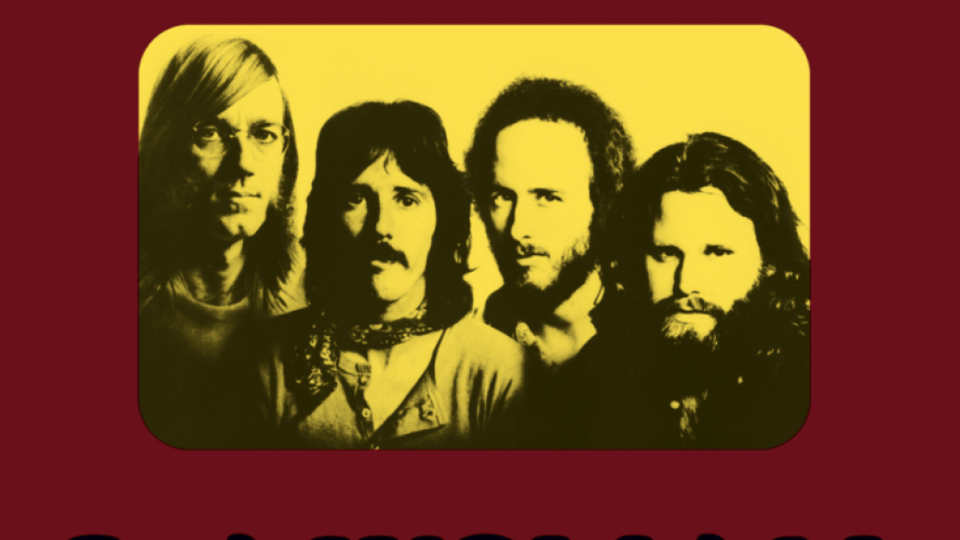
“Horse Latitudes”: 34.07°N 118.39°W — or, Los Angeles, CA — Return to Sunset Boulevard, revisit some bars, reconnect with that estranged lover from before, burn down the abandoned mansion, and hit the road fast. Never look behind, never call your mother.
Jim’s Mick Jagger moment: “The Changeling.” Starting off with the grunt and the random mumbling, you can’t help but imagine he was trying to ape some of Jagger’s moves. Then again, he was hardly in any condition to do that.
Whoa, who’s that on the cover? Is it Jim James? James Brolin? The guy on the sign for South Florida’s chain restaurant, Flanigan’s? Oh, it’s still Jim.

Hey, remember when Creed covered “Riders on the Storm”?
“Where’s your will to be weird?” Pretty much the entirety of “L’America.” Way to get esoteric on us again, Jim.
“Dude, I’m not crying.” On “Hyacinth House,” when Morrison sings, “I need a brand-new friend who doesn’t bother me,” you sort of wish someone would have found him one. You know, a kind soul whose hobbies didn’t involve things that kill human beings. Unfortunately, he threw the Jack of Hearts away, and we’re left with this meditative ballad, one of the band’s strongest deep cuts.
I’ve heard of Bye Bye Love, but Bye Bye Rothchild? Yes, after coping with Morrison’s “charming” behavior for five straight records, legendary producer Paul A. Rothchild wiped his hands clean of the outfit, leaving the seat for engineer Bruce Botnick. There are conflicting stories out there on what exactly went down behind the scenes — some say creative differences, others say grief over the then-recent death of Janis Joplin — so we’ll just go with this GIF as the official explanation:

Shortest song: “Hyacinth House” (2:13)
Longest song: “L.A. Woman” (7:49)
Val Kilmer did it better: Given that “L.A. Woman” arrived after The Doors had ceased touring, we never really got the chance to see Morrison belt this one out. In fact, they only performed it once — at their second-to-last gig. So, seeing Kilmer in the recording booth, laying down the vocals alongside all of the other members one last time, makes for a bittersweet moment. The band looks happy, they look proud, and they look alive. It’s a nice moment that Stone ends his film on and one worth celebrating.
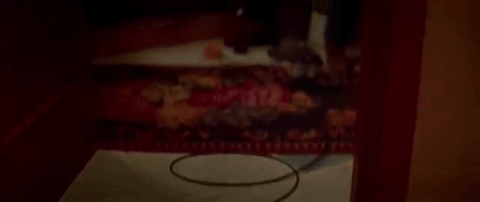
Analysis: L.A. Woman is the perfect final album for The Doors. It’s a weird mix of everything they were capable of up to that point, in addition to a few poignant reminders of where they might go. Although “Love Her Madly” and “Riders on the Storm” were the only two official singles off the album (and arguably the most iconic cuts off the LP), the true gem is the title track, one of the band’s most accomplished masterpieces, a sexy roller coaster that thrives with all the makings of an assured outfit that knows their strengths and knows how to use them in tandem. That breakdown and climb towards the end is sufficient evidence of this.
Whereas Morrison Hotel wrestled with the muddy blues, L.A. Woman goes full nelson, and it works in the band’s favor. After all, Morrison was born for that genre, and his whisky-soaked lungs butter every track with the type of pathos Hemingway used to indulge again and again for his own tragic protagonists. And make no mistake, this is a very tragic album, capturing a singer at odds with his band, the law, and himself. But Mr. Mojo Rising always thrived in that existential chaos, which is why there’s a palpable weight to L.A. Woman that just wasn’t exactly there with the two preceding albums. It’s his final signature.
02. Strange Days (1967)

“Horse Latitudes”: 34.08°N 117.41°W — or, Joshua Tree, CA — Wait ’til it’s scorching hot, drink very little, skip track six, eat adventurously (try a lizard, perhaps), wander into a cave, and write on the walls with your imagination. On your way back into town, return to track six.
Number of songs covered by Aerosmith for the soundtrack to Air America (1990): 1, “Love Me Two Times”
It’s about vampires, right? Although Echo & the Bunnymen’s cover of “People Are Strange” is forever tied to vampires thanks to its inclusion in Joel Schumacher’s The Lost Boys, the song’s about alienation and being an outcast. Okay, so it’s about vampires.
Hey, remember that one New Year’s Eve film with Ralph Fiennes?
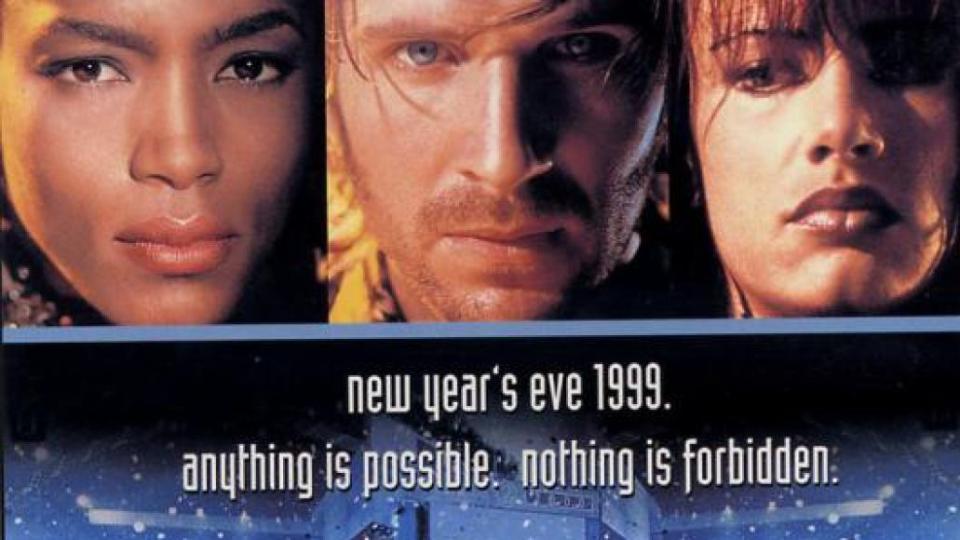
“It seemed pretty cool at the time.” No, it’s still cool:
Whoa, who are those jerks on the cover? From left to right, we have a cabbie who was paid five bucks to “play the trumpet,” a couple of street performers doing their thing, photographer Joel Brodsky’s assistant filling in for a juggler, a hired midget (whose twin appears on the back cover), and a guy much stronger than you or I will ever be. Naturally, record stores slapped Doors stickers on the covers to help move sales, none of which did much to stop Rothchild from considering it a commercial failure.
“Where’s your will to be weird?” “Horse Latitudes” essentially serves as a sneak preview of Morrison’s 1978 spoken-word album, An American Prayer. When you’re on a boat with your uncle next summer, remember to tell him that “true sailing is dead.”
Shortest song: “Horse Latitudes” (1:35)
Longest song: “When the Music’s Over” (10:59)
Val Kilmer did it better: At the very beginning of the film, Kilmer sings an early version of “Moonlight Drive” to Kyle MacLachlan’s Ray Manzarek on Venice Beach, all while the sun burns away into the horizon over surfers and bikini-clad girls. MacLachlan tells Kilmer, “That was fuckin’ beautiful, man.” No argument there.
Analysis: Remember when The Strokes followed up Is This It with Room on Fire two years later? It was another solid hit from the New York rockers, capturing the magic of their debut while also flirting with some new sounds and ideas that every respectable sophomore album dutifully warrants. Well, that’s kind of how Strange Days works alongside The Doors, only it took Morrison and co. a measly eight months to release, and they even paced themselves in the studio. Unlike the six-day marathon of their debut, the band spread out the follow-up’s recording over the summer of 1967, using those months to recalibrate and dig deeper.
Needless to say, they dug deep enough, carving out their most cohesive effort in their catalog. While it’s certainly more psychedelic than their first offering, Morrison paints with broad enough strokes to never lose us. Instead, he enjoys the instrumental highs that his bandmates were offering. There’s the obvious hits like “Love Me Two Times” and “People Are Strange,” but it’s the more intimate cuts like “You’re Lost Little Girl,” “Moonlight Drive,” and “I Can’t See Your Face in My Mind” that capture the band at their creative zenith. And yes, “When the Music’s Over” is a far superior closer to “The End.”
On some days, this writer will place Strange Days over The Doors — and yes, Room on Fire over Is This It. Today is not one of those days, though.
01. The Doors (1967)

“Horse Latitudes”: 34.07°N 118.39°W — or, Los Angeles, CA — Open it up on Sunset Boulevard, hit some bars, find an estranged lover or two, and end the night in some abandoned mansion. Leave your mother out of this.
Number of songs involving incest: 1
Number of songs that could title porn films: 7, “Break on Through (To the Other Side)”, “Soul Kitchen,” “Twentieth Century Fox,” “Light My Fire,” “Back Door Man,” “End of the Night,” “Take It As It Comes”
Okay, it actually is a porn film: “Back Door Man”
“Where’s your will to be weird?”: Manzarek’s organ work for “Alabama Song.” It could easily soundtrack Tobe Hooper’s 1981 clowncore film, The Funhouse.
Jukebox Jim: Every song on the album was written by The Doors, except for two fiery covers, specifically “Alabama Song” and “Back Door Man.” The former was written by Bertolt Brecht and Kurt Weill waaaaay back in 1927, while the latter was penned by Willie Dixon and first recorded by Chicago blues legend Howlin’ Wolf.
Say, what do you think “Break on Through (To the Other Side)” would sound like with Eddie Vedder singing and the surviving Doors playing behind him?
Wild Child: It’s kind of insane how Krieger had only been playing the electric guitar for six months prior to joining The Doors. He also never used a guitar pick, playing flamenco style, which is about the hardest goddamn thing this writer has ever tried to do with the six-string. Nevertheless, it was Krieger who came up with the album’s juggernaut hit, “Light My Fire.” MVP right there.
“Every time I think of Robby Krieger, I see Frank Whaley.” You’re not alone…
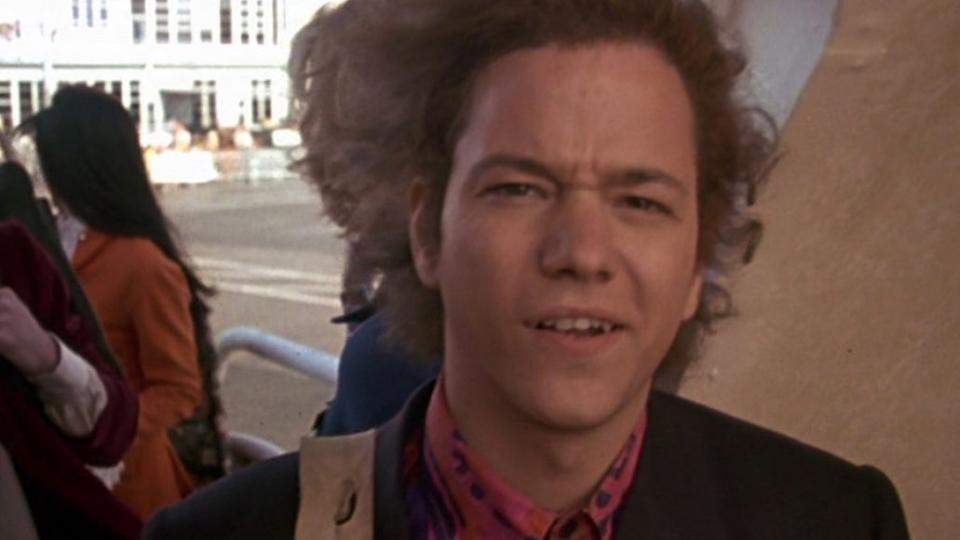
Shortest song: “I Looked at You” (2:22)
Longest song: “The End” (11:41)
Val Kilmer did it better: Let’s be honest, there’s no footage of the group’s last Whisky A Go Go gig, and Kilmer’s performance of the “The End” — especially that “fuck you all night, yeaaaaaah” part — trumps any recording to date. Sorry, Jim.
Speaking of the “The End”…
Analysis: There’s a strange magnetism about The Doors. Aside from being one of the greatest debut albums of all time, it’s also one of the most enduring albums in rock ‘n’ roll history, greeting ensuing generations not with a handshake but a blitzkrieg that has continued to draw in new fans for half a century now. It’s the Nevermind before Nevermind, and even has a similar opening salvo in “Break on Through (To the Other Side)”, which has since evolved into something much more important and impacting than a dusty calling card for the rebellious flower children of yesteryear. No, no, it’s far more transcendent than that.
But what is it, though? Is it Morrison’s flamboyant poetry? Densmore’s jazzy drumming? All the Oedipal imagery in “The End”? Manzarek’s organ candy on “Light My Fire” and “Take It As It Comes”? The hallucinogenics of “The Crystal Ship”? Krieger’s sexy licks on “20th Century Fox”? Who the fuck knows. Perhaps, much like Nevermind and Nirvana after them, the album and the band does tap into that youthful subconsciousness in us all, the one that feels sex, drugs, and rock ‘n’ roll aren’t ugly vices but inherent truths that should be valued over everything else. It’s escapism at its finest, and it’s always sounded groovy.
That is, until you grow up and turn cynical.
Every Album by The Doors, Ranked From Worst to Best
Michael Roffman
Popular Posts
